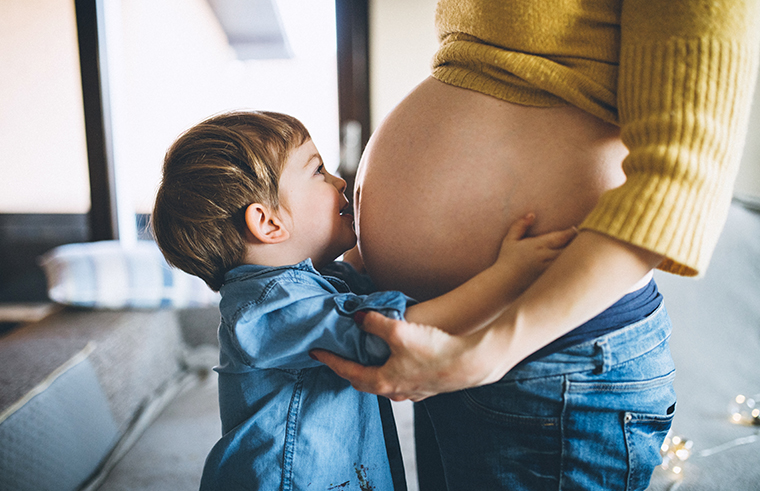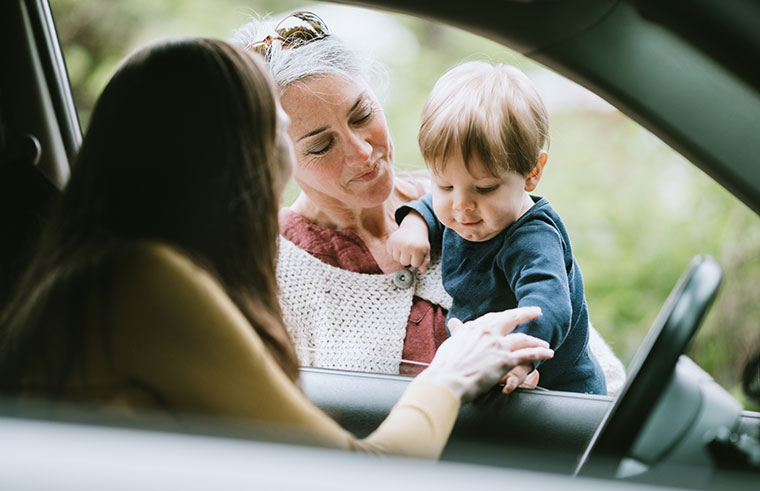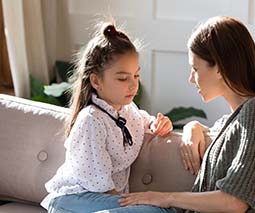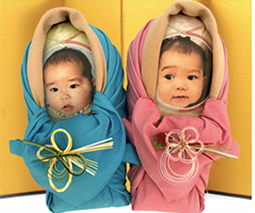Round two: How to prepare your only child for a sibling

Having a second child can embody a whole bunch of different experiences. It might be a big decision mulled over for many months (years even!). It might be an unexpected plot twist, unplanned but definitely doable. Or it might be a battle, if you’ve found conception and early pregnancy a challenge.
Listen to Chris Minogue on Feed Play Love:
A unifying factor in most second child pregnancies is that there’s already a little person waiting in the wings to become a big brother or sister, and that they have no idea what is coming at them.
With this in mind we turned to Mothercraft nurse, Chris Minogue. We wanted to find out how parents can prepare their first child for the new arrival, and what strategies might make this transition from only child and apple-of-their-parents’-eyes to novice sibling a little easier.
Chris says that helping children through this big adjustment should start well before the baby arrives, but not too soon. She also notes that parents’ approach to readying their child for a sibling should be age-appropriate.
“At different ages and stages, you can put different things into place [depending] on their cognitive development,” Chris says.
Avoid the big build up
Try not to talk too much about the baby — if at all — with your child in those early months of pregnancy, Chris advises.
“It’s like saying ‘Santa is coming’ but Santa is not coming until December. But you’ve told them in March!”

Chris also notes that once friends and family know a baby is on the way, they shouldn’t bombard your child with baby chat.
“Talking to the first child about being a big brother or big sister … is a lot of pressure when they’re not quite sure what that actually means,” she points out.
Basically, keeping a lid on revealing the baby news to your child for as long as you can, can help to compress that period of uncertainty for your child and make things less stressful for everyone.
Keep it short
Once your child knows that a baby is on the way, begin to have brief conversations about what is happening. Again, be led by your child.
“Answer questions as children raise questions,” Chris says.
“Have little chats about how your family’s getting bigger and there’s a new baby coming home. But keep it quite short and quite age-appropriate to the child’s needs.”

Visuals are really useful
For small children the idea of a baby coming is quite an abstract concept to get their head around. What they can more easily come to terms with is visuals and tangible things that relate to the baby’s arrival.
Some ideas might be:
Hospital drive by
Chris says around the 37th week of pregnancy it can be really helpful to take your child for a drive past the hospital and begin to talk through what will happen in the days around labour and the baby’s birth.
“Pass the hospital and in very simple language say things like ‘Mummy needs to go in there to have the baby and Mummy will need to stay for a little while with the baby’.”
“The response from the talking toddler might be ‘And I come too!’ And at that point, you say ‘No, you’ll stay at home with such-and such’. You need to have your plan in place.”

Hospital tour
Taking your child inside the hospital is a good idea as well. This might naturally happen as you go to antenatal appointments, but if not, a tour can be a good idea.
“Lots of hospitals have a tour,” Chris confirms. “[Your child can] get really familiar with the hospital.”
Bring on the baby gear
Another way to prepare your child for this big transition is by changing the car seats around and bringing in the baby equipment well before the baby arrives.
Say things like “there’s a baby seat over here and you’re in a big seat”, and talk together about the baby’s bed or other baby items.

Steady does it
Chris says one of the most valuable things you can do to help your child adjust is to make sure that in the days around the birth and postpartum period, they are able to stay at home in their own room and that their usual routine is still in play.
“Make sure that that child stays at home in their home base, not suddenly flit off to this grandmother and that grandmother and great Auntie Jo down the road. That they actually stay at home and that the partner resumes that evening routine, which is the bit where children struggle,” Chris says.
“This really stabilises the child,” and helps them “to understand what might have gone on during the day.”
“It’s great if family can help, but they’re helping in the normal routine of the child. They’re not taking the child away, because you can imagine if you were two – ‘Mummy’s gone that way to stay with a baby, Grandma has come in and now I’m staying at my other Grandma’s place.’ That’d be very chaotic in their brain. We’re trying to keep it as calm as we can so they get used to this new little baby.”

Create a special calendar
“If a child is over two and a half, use a calendar to help them understand what is happening,” Chris suggests.
She explains that adding visuals to the calendar can help kids understand what is happening when, and what their part in it will be.
“Put a few pictures on there. ‘Mummy’s going to hospital today, Daddy will come, but Grandma is coming too’ – so there’s a picture of maybe a hospital with a Mummy and Daddy and a baby and then there’s a picture of Grandma. And then each day they take that off. Then there’s a picture of them and they come in to visit with the words ‘Visit Mummy in hospital’. Then there might be something like ‘Go to the park with Grandma’.”
“They take the days off [the calendar] so that as they move through the week, they can see themselves coming to the point where Mummy’s coming home with this baby.”
For many children, the birth of a sibling is the first time they’re away from their mother.
Finding ways to make this less painful and to help them understand what’s happening around them will go a long way towards easing the transition from only child to sibling.









